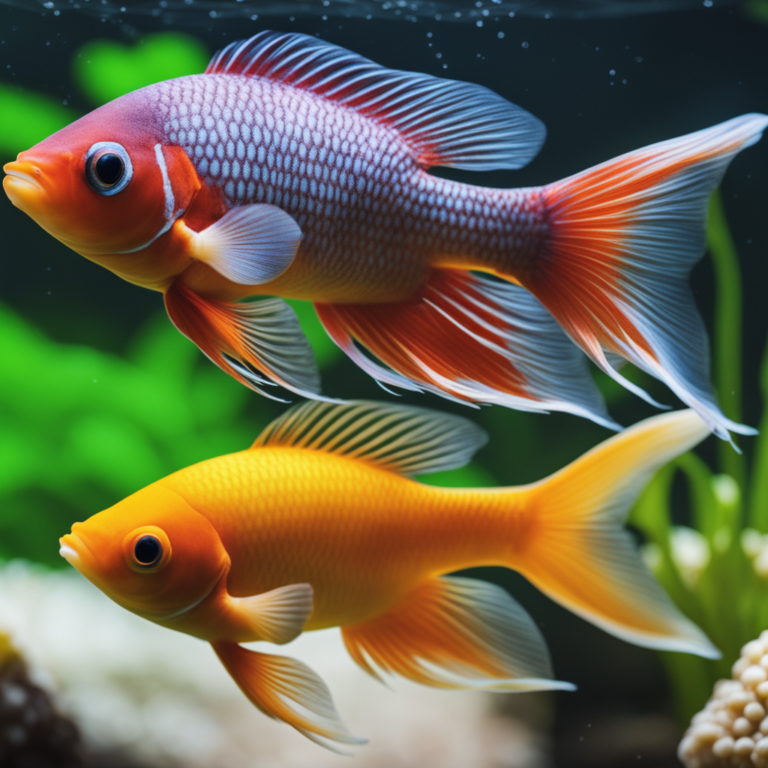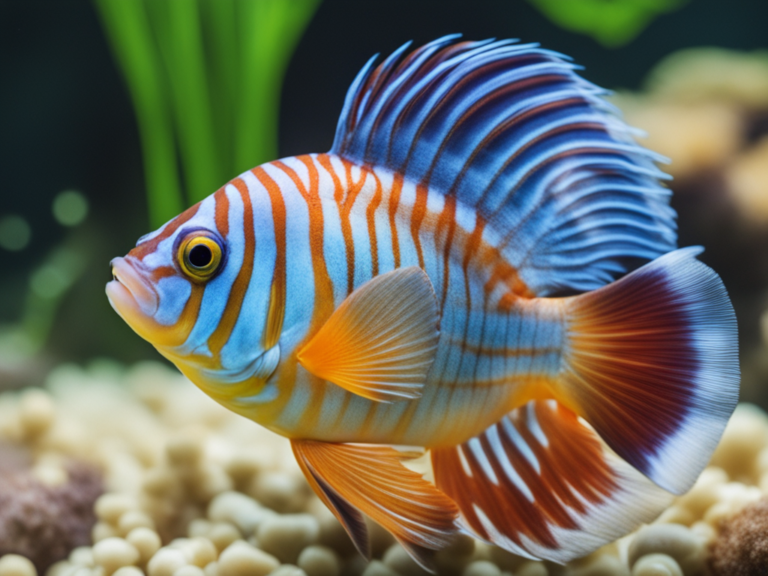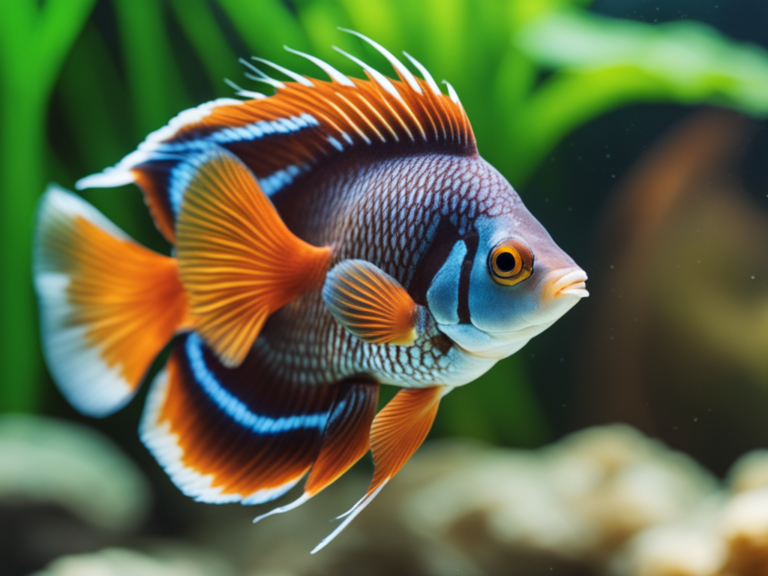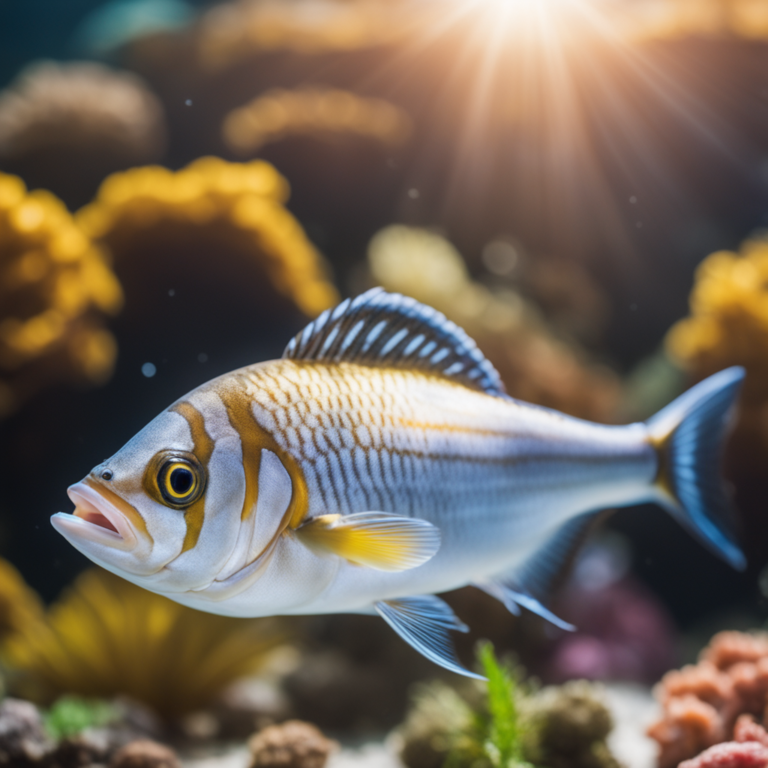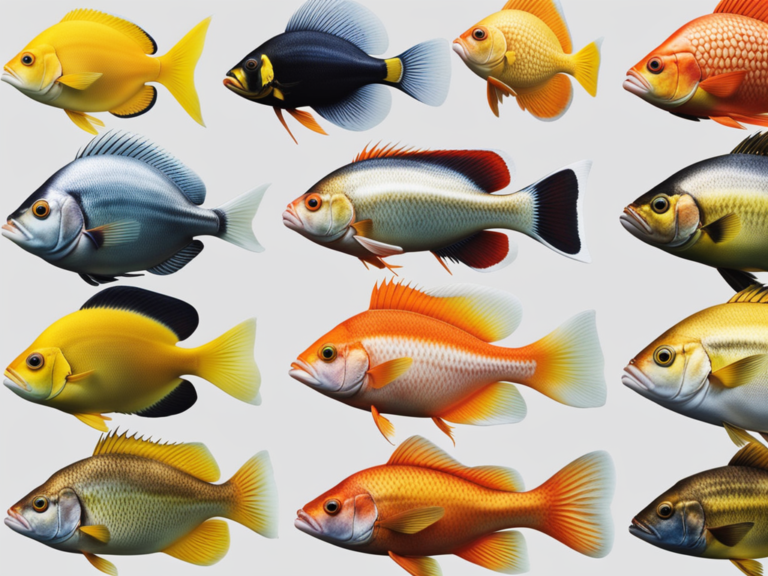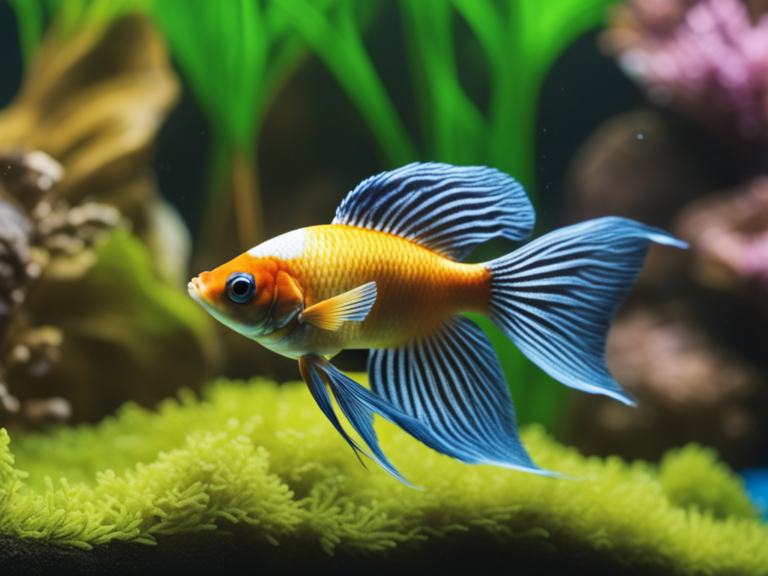Fish Breeds That Live Well Together
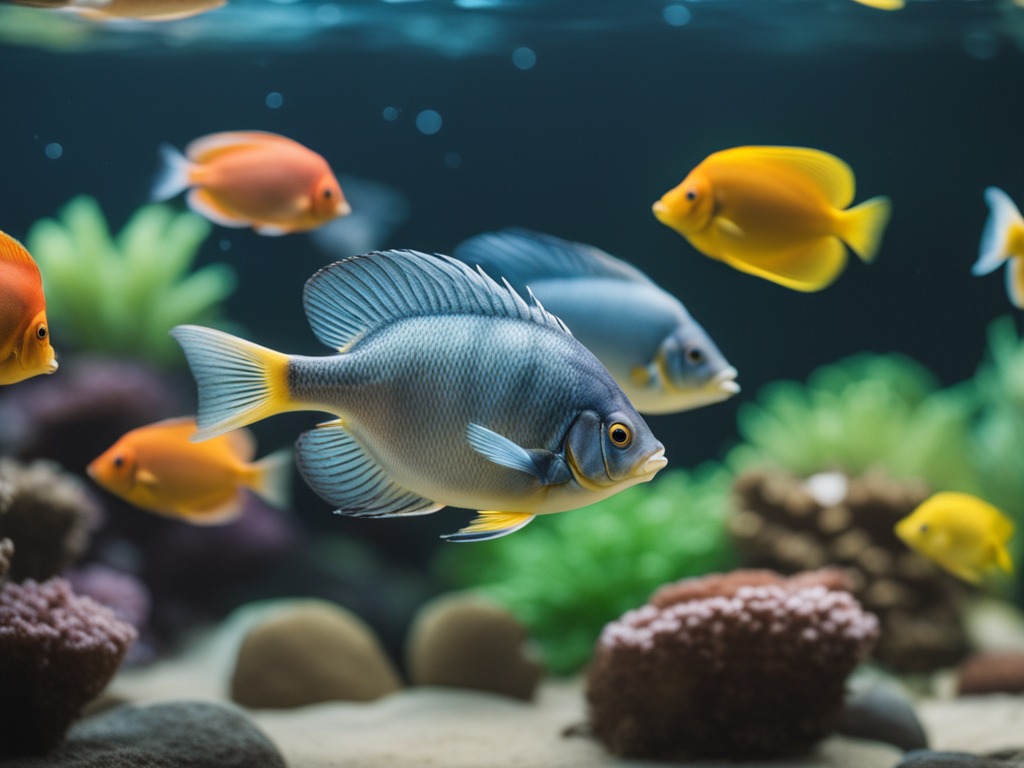
Fish Breeds That Live Well Together: Are you interested in creating a harmonious underwater world in your fish tank? Did you know that certain fish breeds have a knack for living well together? With a staggering 70% of aquarium owners facing challenges when it comes to compatibility, it’s crucial to choose fish that can coexist peacefully.
By selecting breeds that thrive in each other’s company, you’ll not only ensure a serene environment but also enhance the beauty of your tank. Whether you have a small or large aquarium, there are plenty of options available to create a diverse and vibrant community. In this guide, we will explore various fish breeds that live well together, allowing you to create a harmonious underwater paradise.
Compatible Freshwater Fish Breeds
If you want to create a harmonious freshwater fish tank, it’s important to choose compatible breeds that get along well with each other. The key to creating a balanced fish community lies in understanding the freshwater fish compatibility guide. Different fish species have varying behavior, feeding habits, and territorial requirements. By considering these factors, you can ensure a peaceful and thriving fish tank environment.
When selecting fish breeds, it is crucial to avoid combining aggressive and peaceful species. Aggressive fish can stress out their tank mates, leading to injuries or even death. Some examples of aggressive fish species include Tiger Barbs, Jack Dempsey, and Red Devils. On the other hand, peaceful fish species like Tetras, Guppies, and Corydoras are known for their calm temperament and can coexist harmoniously with other community fish.
Another important aspect to consider is the fish’s size. Mixing fish of significantly different sizes can lead to dominance issues and potential predation. It’s best to choose fish that are similar in size to maintain harmony within the tank. For instance, keeping large predatory fish like Oscars or Arowanas with small-sized fish like Neon Tetras or Guppies is not advisable.
Furthermore, the compatibility of fish species can also depend on their preferred water parameters. Some fish require specific pH levels, water hardness, or temperature ranges to thrive. It’s crucial to research the optimal water conditions for each fish breed and ensure they are compatible with one another.
Peaceful Community Fish Species
Looking for peaceful community fish species to add to your freshwater tank? When it comes to creating a harmonious aquarium environment, selecting peaceful tank mates is essential. Two popular choices for peaceful betta tank mates are the neon tetra and the harlequin rasbora. These small, colorful fish are known for their peaceful nature and can coexist peacefully with bettas, as long as the tank is large enough to accommodate them all.
The neon tetra, scientifically known as Paracheirodon innesi, is a vibrant species that adds a pop of color to your tank. These fish are social and thrive in small groups, making them great companions for bettas. They are peaceful and non-aggressive, which helps maintain a calm and serene atmosphere in the tank. Similarly, the harlequin rasbora, or Trigonostigma heteromorpha, is another peaceful fish that can live harmoniously with bettas. They are small, with a distinct diamond-shaped pattern on their bodies, and prefer to swim in groups. Their calm demeanor makes them ideal companions for bettas, as they do not pose a threat or provoke aggression.
If you’re looking for compatible guppy companions, consider adding mollies or platies to your community tank. Mollies, belonging to the Poecilia genus, are peaceful fish that come in a variety of colors and patterns. They are known for their ability to adapt to different water conditions, making them suitable tank mates for guppies. Platies, on the other hand, are also peaceful fish that enjoy swimming in groups. They come in various colors and have a playful nature, which adds liveliness to your tank. Both mollies and platies are compatible with guppies, as they share similar water parameter requirements and peaceful dispositions.
Best Fish Pairs for Small Tanks
To create a harmonious environment in your small tank, consider pairing peaceful fish breeds that can coexist well together. When introducing new fish to a small tank, there are certain tips to keep in mind to ensure a smooth integration. Firstly, it is important to quarantine any new fish before introducing them to the main tank. This helps prevent the spread of diseases and parasites to the existing fish population. Quarantine tanks should be set up with similar water conditions as the main tank, and the new fish should be observed closely for any signs of illness before being introduced.
When it comes to maintaining water quality in a small tank with multiple fish species, regular water testing and maintenance are crucial. Small tanks can easily become overcrowded, leading to increased waste production and a decline in water quality. To prevent this, it is recommended to limit the number of fish in the tank and provide adequate filtration and aeration. Regular partial water changes should be performed to remove accumulated waste and replenish essential nutrients.
Additionally, it is important to consider the compatibility of fish species in terms of their size, temperament, and dietary requirements. Some fish may be more aggressive and territorial, while others may have specific dietary needs. Researching and selecting fish breeds that have similar requirements and temperaments will help prevent conflicts and ensure a peaceful coexistence in the small tank.
Colorful Fish Combinations for a Vibrant Tank
Create a vibrant tank by pairing colorful fish breeds that complement each other. The combination of different colors and patterns can create a stunning visual display in your aquarium. Here are three suggestions for colorful fish combinations that will add vibrancy to your tank:
- Top predator fish duos for an exciting tank: If you want a tank with a touch of excitement and intrigue, consider pairing top predator fish. The vibrant colors of the Red-bellied Piranha and the Arowana create a stunning contrast. The Piranha’s red belly and silver body, along with the Arowana’s vibrant orange scales and long, sleek body, create a captivating display. These fish are not only visually striking but also exhibit fascinating hunting behaviors, making them an exciting addition to any tank.
- Unconventional fish pairings for an eclectic aquarium: For those looking for something unique and unconventional, consider pairing the vibrant colors of the Discus with the striking patterns of the Clown Loach. The Discus, known for its vibrant reds, blues, and yellows, will add a splash of color to your tank. When paired with the vibrant orange and black stripes of the Clown Loach, the result is an eye-catching and eclectic display. These fish have different personalities and behaviors, adding diversity and interest to your tank.
- Colorful community fish for a harmonious tank: If you prefer a peaceful and harmonious tank, consider a combination of colorful community fish. The Neon Tetra, with its bright red, blue, and silver colors, pairs well with the Guppy, known for its vibrant patterns and colors. These fish create a beautiful contrast in the tank and are known for their peaceful nature. Together, they create a harmonious and visually appealing display.
Coldwater Fish Breeds That Coexist Well
For a successful coexistence among coldwater fish breeds, it is important to choose compatible species that thrive in similar temperature conditions. When selecting coldwater fish breeds for beginners, it is crucial to consider their ability to tolerate high temperatures. Certain breeds are better suited for cohabitation due to their adaptability and compatibility with other species.
One coldwater fish breed that can tolerate high temperatures is the White Cloud Mountain minnow (Tanichthys albonubes). This small, peaceful fish is ideal for beginners and can coexist well with other coldwater species. It thrives in temperatures ranging from 64 to 72 degrees Fahrenheit (18-22 degrees Celsius) and prefers a well-planted aquarium with plenty of swimming space.
Another coldwater fish breed that is compatible with others is the Rosy Red minnow (Pimephales promelas). These hardy fish can tolerate temperatures as low as 50 degrees Fahrenheit (10 degrees Celsius) and as high as 86 degrees Fahrenheit (30 degrees Celsius). They are peaceful and can live harmoniously with other coldwater species, making them suitable for beginners.
The Zebra danio (Danio rerio) is another coldwater fish breed that can coexist well with others. Known for its vibrant stripes, this active and social fish thrives in temperatures between 64 and 74 degrees Fahrenheit (18-23 degrees Celsius). They are peaceful and can live harmoniously with other coldwater species, making them an excellent choice for beginners.
Ideal Saltwater Fish Mixes for a Marine Aquarium
When it comes to creating a harmonious marine aquarium, it’s important to carefully consider the ideal mix of saltwater fish breeds. The right combination of fish can not only enhance the aesthetic appeal of your aquarium but also contribute to the overall health and balance of the ecosystem. Here are some tips to help you maintain a healthy saltwater aquarium ecosystem and avoid common mistakes when selecting fish for your marine aquarium:
- Research and Plan: Before adding any fish to your aquarium, it is crucial to research their compatibility with other species. Some fish are territorial and may become aggressive towards others, while some thrive in groups and can help create a peaceful environment. Planning ahead can prevent conflicts and ensure a successful mix of fish breeds.
- Consider Size and Behavior: It is important to consider the adult size and behavior of the fish you choose. Some species may outgrow your aquarium, causing overcrowding and stress. Additionally, aggressive or territorial fish can disrupt the harmony of the tank, leading to injuries or even death of other fish. Carefully selecting fish that are compatible in size and behavior will help maintain a peaceful and well-balanced ecosystem.
- Introduce Fish Gradually: When adding new fish to your aquarium, it is recommended to introduce them gradually. This allows the existing fish to acclimate to the newcomers and reduces the likelihood of aggression or stress. Quarantining new fish before introducing them to the main tank can also help prevent the spread of diseases.
Bottom-Dwelling Fish That Get Along
To maintain a harmonious marine aquarium ecosystem, it is important to consider which bottom-dwelling fish breeds get along well with each other. Bottom-dwelling fish, also known as substrate fish, are species that prefer to spend most of their time near the bottom of the tank. These fish play a crucial role in keeping the tank clean and balanced by feeding on algae, leftover food, and other organic matter that settles on the substrate.
When selecting bottom-dwelling fish for your community tank, it is essential to consider their tank requirements. Different species have specific needs regarding water parameters, temperature, and tank size. Conduct thorough research on the specific breeds you are interested in to ensure that their requirements align with your existing tank setup.
Introducing new fish to a community tank requires careful consideration. To minimize stress and potential aggression, it is recommended to acclimate the new fish to the tank gradually. This can be achieved through a process called drip acclimation, where water from the tank is slowly added to the bag or container holding the new fish. This helps the fish adjust to the tank’s water parameters gradually.
Observing the behavior of the fish is crucial during the introduction process. Some signs of aggression or territorial behavior include chasing, nipping, or excessive hiding. If any signs of aggression are observed, it is best to separate the fish and try introducing them at a later time.
Schooling Fish Varieties for a Unified Tank
To maintain a harmonious marine aquarium ecosystem, consider incorporating schooling fish varieties that coexist well with the bottom-dwelling breeds. Schooling fish behavior and social dynamics play a crucial role in creating a balanced ecosystem with compatible fish breeds. Here are three key points to consider when adding schooling fish to your tank:
- Grouping Behavior: Schooling fish are known for their instinctual behavior of swimming together in large groups. This behavior not only enhances the aesthetics of your tank but also provides a sense of security for the fish. The constant movement of the school creates a dynamic environment that mimics their natural habitat, reducing stress and promoting overall well-being.
- Social Hierarchy: Within a school, there is often a social hierarchy where dominant and subordinate individuals establish their positions. It is important to choose schooling fish that have compatible social dynamics to prevent aggression and ensure a peaceful tank environment. Research the behavior and size of different species to select those that will peacefully coexist and avoid any territorial conflicts.
- Compatible Tank Mates: When selecting schooling fish, it is crucial to consider their compatibility with your bottom-dwelling breeds. Look for fish that occupy different levels of the tank, minimizing competition for space and resources. Additionally, consider the size and activity level of the schooling fish to ensure they do not intimidate or harass the bottom-dwelling species.
Non-Aggressive Cichlid Combinations
For a harmonious aquarium, consider combining non-aggressive cichlid breeds with other compatible fish species. Non-aggressive cichlids can make excellent tank mates, as they are generally peaceful and can thrive in a community tank. When selecting suitable tank mates for non-aggressive cichlids, it is important to consider their size, behavior, and water requirements.
One popular non-aggressive cichlid breed is the angelfish (Pterophyllum scalare). These elegant fish have a calm temperament and can be successfully housed with a variety of other species. Suitable tank mates for angelfish include peaceful community fish such as tetras, rasboras, and gouramis. These fish share similar water requirements and can create a visually stunning and diverse aquarium.
Another non-aggressive cichlid breed that can be combined with compatible tank mates is the Apistogramma. These small-sized cichlids are known for their vibrant colors and fascinating behavior. Suitable tank mates for Apistogramma include small schooling fish like neon tetras, ember tetras, and pencilfish. These fish are not only visually appealing but also help create a sense of security for the Apistogramma by forming a tight-knit group.
It is crucial to avoid aggressive or territorial fish species when considering non-aggressive cichlid tank mates. Aggressive fish can disrupt the peaceful nature of the aquarium and cause stress or harm to the cichlids. Additionally, it is essential to provide adequate hiding spots and territories for each fish, ensuring they have enough space to establish their own territories and reduce the likelihood of aggression.
Unique Fish Matches for a Diverse Underwater World
Expand your underwater world with a diverse array of unique fish matches. By creating unusual fish duos for an eclectic aquarium, you can enhance the beauty and intrigue of your underwater display. These exotic fish partnerships will add a touch of exoticism to your aquatic environment, captivating both you and your audience.
- The Clownfish and Bubble Tip Anemone: This iconic duo is not only visually stunning but also has a fascinating symbiotic relationship. The Clownfish seeks refuge and protection within the stinging tentacles of the Bubble Tip Anemone, while the anemone benefits from the clownfish’s cleaning services and food scraps. Together, they create a dynamic and colorful display that is sure to impress.
- The Goby and Pistol Shrimp: This unlikely pairing showcases a unique behavioral adaptation. The Goby acts as a lookout, alerting the Pistol Shrimp of potential threats, while the Pistol Shrimp constructs and maintains a burrow for both of them to share. This cooperative partnership is not only visually appealing but also showcases the power of mutualistic relationships in the underwater world.
- The Cleaner Wrasse and Client Fish: The Cleaner Wrasse is known for its cleaning behavior, where it removes parasites and dead skin from other fish. This mutually beneficial relationship not only benefits the client fish by improving their overall health but also creates a captivating spectacle of fish interaction in your aquarium. Observing the Cleaner Wrasse diligently attending to the client fish’s needs is a sight to behold.
Fish Breeds That Live Well Together Frequently Asked Questions
What Are the Best Fish Breeds for a Beginner Fish Keeper?
As a beginner fish keeper, you should avoid common mistakes like overcrowding and choosing aggressive fish breeds. Create a suitable habitat by maintaining proper water quality, providing hiding spots, and matching fish with similar temperaments.
Are There Any Fish Breeds That Are Known to Be Highly Territorial and Should Be Kept Alone?
Some fish breeds are highly territorial and aggressive, and they should be kept alone to avoid conflicts. When introducing new fish to an existing tank, it is important to follow proper protocols to minimize territorial disputes.
Can I Mix Different Species of Fish That Have Similar Dietary Requirements?
Yes, you can mix different species of fish that have similar dietary requirements. This has several pros, including reduced competition for food. However, there are cons such as increased waste production. To ensure successful cohabitation, provide ample space and monitor feeding to prevent overeating.
Are There Any Fish Breeds That Are Known to Be More Prone to Diseases and Should Be Avoided?
Certain fish breeds are more prone to diseases and should be avoided. It is important to research and identify these breeds to prevent potential health issues in your aquarium. Proper care and regular monitoring can help prevent and treat diseases in fish breeds.
Can I Mix Fish Breeds With Different Temperature Requirements in the Same Tank?
Yes, you can mix fish breeds with different temperature requirements in the same tank. However, there are pros and cons to consider. To create a suitable environment, use a heater and monitor water temperature regularly.
Conclusion
In conclusion, when it comes to selecting fish breeds that can coexist harmoniously in an aquarium, there are numerous options available. From peaceful community fish species to colorful combinations for vibrant tanks, and even coldwater fish breeds that get along well, there is a wide array of choices for every fish enthusiast. It is essential to consider factors such as compatibility, tank size, and specific requirements of each breed to ensure a successful and thriving underwater world. By carefully selecting compatible fish pairs and creating a diverse ecosystem, you can create a captivating and balanced aquarium.



